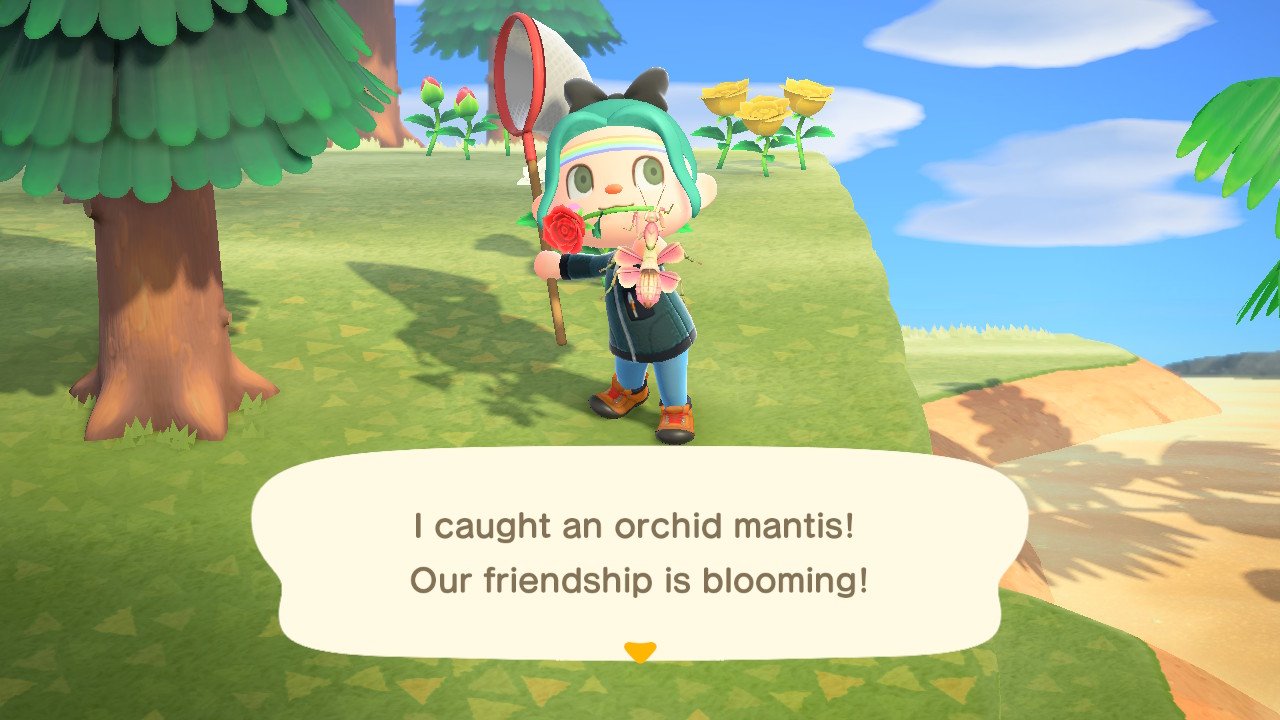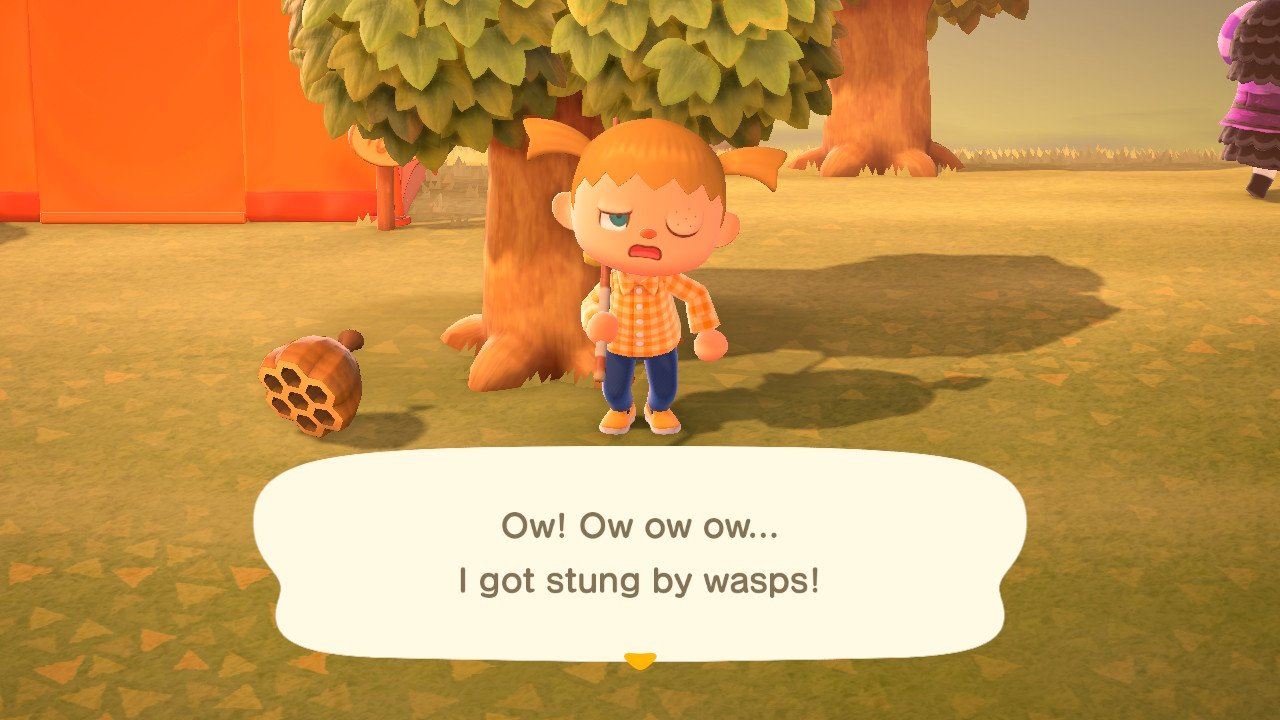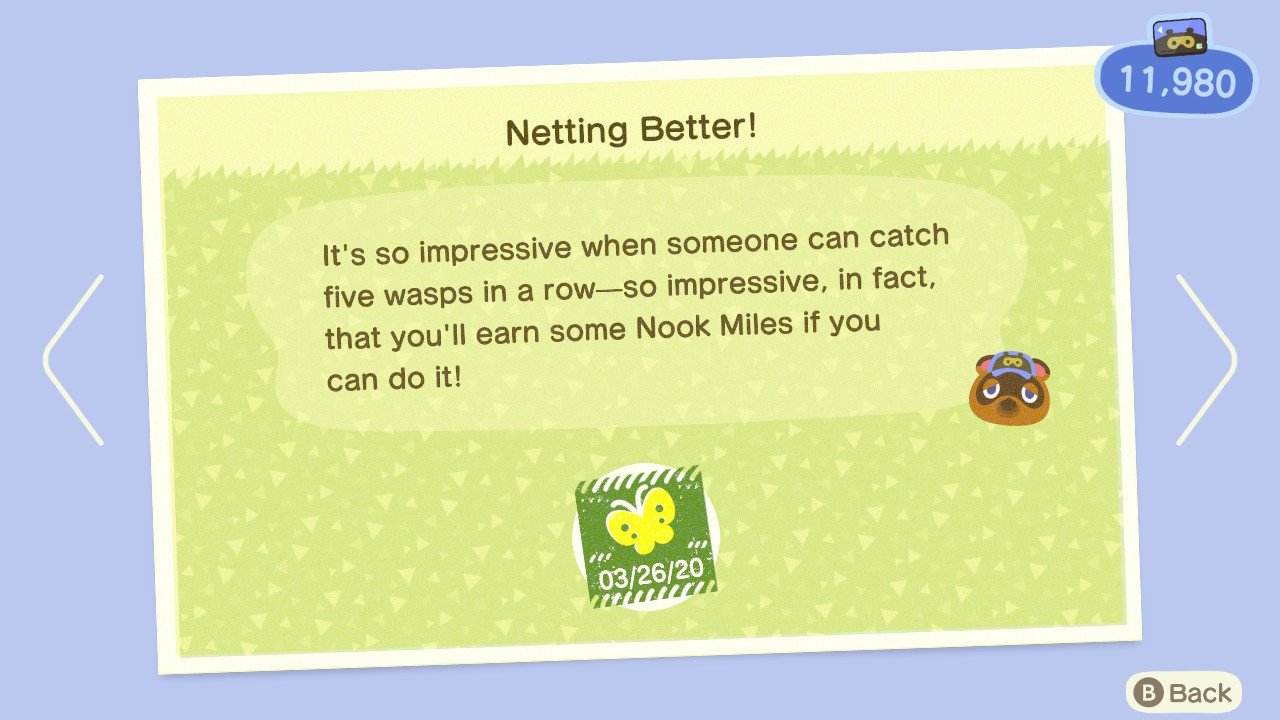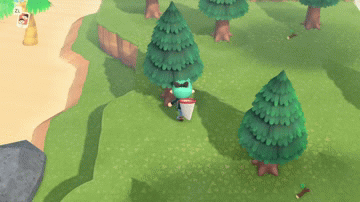Animal Crossing: New Horizons — Bug catching guide

Any fan of the Animal Crossing series knows that an important part of the game is catching, collecting, and selling bugs. From the common and harmless butterflies to the rare and dangerous scorpions, there are many insects and creepy crawlies to catch in Animal Crossing: New Horizons, and good reasons to do so. Lucky for you, we here at iMore know where all these bugs are hiding, how to catch them, and what to do with them once you do!
Bug catching in Animal Crossing: New Horizons

One of the things you'll want to do every day in Animal Crossing: New Horizons is catch bugs. You can earn achievements, fill your museum, and make a ton of Bells by catching bugs. Plus, the bugs you can catch change throughout the day and year so you can fill out your Critterpedia.
How to catch bugs
To catch most bugs, all you need is a net, a bug, and some patience.
- You can craft a Net at a DIY crafting table.
- A Flimsy Net only takes five Tree Branches. You can upgrade it to a regular Net with one Iron Nugget. Eventually, you'll even be able to craft a Golden Net, but to start with, a Flimsy Net works just fine. It will break eventually but since Tree Branches are an unlimited resource, you can easily replace it.
- Alternatively, you can buy a Flimsy Net from Timmy and Tommy Nook for 400 Bells.
- Once you have your net, you need to find a bug. This part is pretty easy. There are bugs all over your island. Some will be crawling on the ground, some resting on flowers, while others are flying around.
- When you have a bug in sight, get close and press the A Button to swing your net.
- Alternatively, you can hold the A Button while inching closer to the bug, so as not to scare it away while you line up the perfect shot.
Where to catch bugs

Different bugs can be found in different places throughout your island. Many bugs will be flying around, while others crawl around on the ground. Others are more particular. You can find bugs in the following places:
- Ground: These bugs can be found crawling anywhere on the ground.
- Flying: These bugs can be found flying anywhere.
- Flowers: These bugs are only found close to or on flowers. Some might even prefer certain color flowers.
- Rocks: These bugs can be found by hitting or even breaking rocks.
- Wet Rocks: These bugs can be found resting on rocks when it's raining.
- Beach Rocks: These bugs can be found on the rocks on the beach.
- Beach: These bugs can only be found on the shoreline in the sand.
- Trees: These bugs can be found by shaking trees.
- Tree Trunks: These bugs can be found clinging to tree trunks.
- Tree Stumps: These bugs can only be found on tree stumps left behind from cutting down trees.
- Itchy Villagers: These bugs can only be found when one of your villagers has an itch.
- Rotten Fruit, Turnips, or Garbage: These bugs can only be found when fruit, turnips, or trash have been left on the ground.
Hiding bugs
Not all of the bugs in Animal Crossing: New Horizons will be out in the open. There are a few places where bugs can hide that require a little more effort to catch:
- Trees: Sometimes bugs hide in the leaves or needles of a tree. To catch these hiding bugs, you'll need to shake trees until you find one. Be careful though! Wasps also hide in trees!
- Rocks: Some bugs hide in the soil beneath rocks. To catch these hiding bugs, you need to hit rocks with a shovel or axe until one scurries out. You need to be fast though, because these bugs don't like the light and will quickly disappear into the ground.
- Underground: One bug in particular likes to hide under the ground. You'll have to dig to find these ones.
- Tree Trunks: There are some bugs that blend right in with tree trunks. If you move too quickly past these hiding bugs, they will fly away, so always keep your eyes peeled and walk carefully.
- Sea Shells: Hermit crabs live inside sea shells, so be vigilant when you're collecting your treasures from the beach. If you have your net handy, you can catch hermit crabs before they crawl away.
When to catch bugs
While some bugs, like ants or common butterflies, can be found anytime of the year, most bugs can only be found during certain months. These months are similar to when these bugs would be around in the real world and are different based on which hemisphere you live in. Because the seasons are reversed in the different hemispheres, so too are the times of year when you can catch your bugs.
Likewise, not all bugs will be out at all times of day. Moths, for example, are found when it is dark out, while dragonflies are out during the day. Most bugs have specific time windows when you can catch them so if you're hunting a particular creepy crawly, make sure you've got the right time window to catch it.
iMore offers spot-on advice and guidance from our team of experts, with decades of Apple device experience to lean on. Learn more with iMore!
Dangerous bugs

While most bugs will scurry or fly away if you're not careful, there are some bugs that are especially dangerous. The following bugs can hurt you, cause you to faint, or leave your face swollen and in need of medicine:
- Wasps hide in Ttees. If you don't manage to catch a wasp quickly, it will sting you and fly away!
- Scorpions and tarantulas can be found on the ground. They are very aggressive. If you get stung or bit by one, you will faint!
- Mosquitos are less dangeous than the others, but they will bite you if you stand near them for too long.
To read more on how to catch dangerous Bugs, read our guide on how to catch trantulas, wasps, and scorpions.
Why do I want to catch bugs anyways?
Aside from bug catching being a significant part of the game, there are lots of reasons to be on the hunt. You can earn Nook Miles for catching specific bugs and lots of them. You can sell them for lots of Bells. You can even fill a museum.
Blathers' Museum

For fans of the Animal Crossing series, you already know Blathers. This bug-averse owl will come to your island and build a museum where one of every fossil, fish, and bug can be put on display. Blathers might dislike the bugs, but he still wants one of each of the 80 species found on your island. Not only is this a fun way to keep track of your achievement in bug hunting, but you can also go through the museum and see the different bugs you've caught. Blathers will even tell you fun facts about the bugs — much to his dismay!
Bells, Bells, Bells!!!
Probably the most compelling reason to catch bugs is to earn Bells. Bells, the currency of the Animal Crossing world, are necessary to build your home, purchase clothing and decor, and otherwise progress in your game. Like most anything else you can gather in New Horizons, bugs can be sold at Nook's Cranny for a lot off Bells. The rarer the bug, the more Bells you'll get.
To read more, see our fish, bug, and shell Bells guide.
Nook Miles

Another big benefit to catching bugs is the Nook Miles achievments. Nook Miles are a secondary currency used in Animal Crossing: New Horizons. These Miles can be exchanged for clothing, DIY Recipes, furniture, and most importantly, Nook Miles Tickets. Nook Miles Tickets are your pass to fly to a completely new, random island. On these islands, you can find fruit and plants that you might not already have, additional rocks to smash for iron nuggets and stones, and even new potential villagers.
You earn Nook Miles by doing all sorts of things in game, and that includes catching bugs. There are achievements for catching specific bugs, for catching certain numbers of bugs, and even for catching certain bugs multiple times. Since you need Nook Miles Tickets to unlock certain features in the game, you should always be catching bugs.
To read more, see our Nook Miles guide.
The Golden Net
There is one other reason to catch bugs in Animal Crossing: New Horizons, and that is the Golden Net. The Golden Net is a special, nearly unbreakable net. While it is possible to break a Golden Net, it takes a very long time. However, you can only craft this incredible tool after you've caught one of every single bug in the game. Without time traveling, this will take many months, since certain Bugs are only available during certain seasons. Trust me, it'll be worth the effort!
Every bug available in Animal Crossing: New Horizons
Thus far, there are 80 different insects, bugs, and other creepy crawlies to be caught on the Animal Crossing: New Horizons islands. While some, like ants can be found year round and any time of the day, others are limited to specific months and times. These various bugs can also be caught in different ways. The following are all 80 bugs so far, where and when they can be caught, and how much you can sell them for:
| Bug | Months* | Hours | Location | Bells |
|---|---|---|---|---|
| Agrias Butterfly | April to September | 8 AM to 5 PM | Flying | 3,000 |
| Atlas Moth | April to September | 7 PM to 4 PM | Tree Trunks | 3,000 |
| Ant | Any | Any | Rotten Fruit/Turnips | 80 |
| Bagworm | Any | Any | Shaken Trees | 600 |
| Banded Dragonfly | May to October | 8 AM to 5 PM | Flying | 4,500 |
| Bell Cricket | September to October | 5 PM to 8 AM | Ground | 430 |
| Blue Weevil Beetle | July to August | Any | Palm Tree Trunks | 800 |
| Brown Cicada | July to August | 8 AM ro 5 PM | Tree Trunks | 250 |
| Centipede | September to June | 5 PM to 11 PM | Hit Rocks | 430 |
| Cicada Shell | July to August | Any | Tree Trunks | 10 |
| Citrus Long-Horned Beetle | Any | Any | Tree Stumps | 350 |
| Common Bluebottle | April to August | 4 AM to 7 PM | Flying | 300 |
| Common Butterfly | September to June | 4 AM to 7 PM | Flying | 160 |
| Cricket | September to November | 5 PM to 8 AM | Ground | 130 |
| Cyclommatus Stag | July to August | 5 PM to 8 AM | Tree Trunks | 8,000 |
| Damselfly | November to February | Any | Flying | 500 |
| Darner Dragonfly | April to October | 8 AM to 5 PM | Flying | 230 |
| Diving Beetle | May to September | 8 AM to 7 PM | River | 800 |
| Drone Beetle | June to August | Any | Tree Trunks | 200 |
| Dung beetle | December to February | Any | Snowballs | 2,500 |
| Earth-Boring Dung Beetle | July to September | Any | Ground | 300 |
| Emperor Butterfly | December to March June to September | 5 PM to 8 AM | Flying | 4,000 |
| Evening Cicada | July to August | 4 AM to 8 AM 4 PM to 7 PM | Tree Trunks | 550 |
| Firefly | June | 7 PM to 4 AM | Flying | 300 |
| Flea | Any | Any | Itchy Villagers | 70 |
| Fly | Any | Any | Rotten Fruit or Garbage | 60 |
| Giant Cicada | July to August | 8 AM ro 5 PM | Tree Trunks | 500 |
| Giant Stag | July to August | 11 PM to 8 AM | Tree Trunks | 10,000 |
| Giant Water Bug | April to September | 7 PM to 8 AM | Ponds and Rivers | 2,000 |
| Giraffe Stag | July to August | 5 PM to 8 AM | Tree Trunks | 12,000 |
| Golden Stag | July to August | 5 PM to 8 AM | Tree Trunks | 12,000 |
| Goliath Beetle | June to September | 5 PM to 8 AM | Tree Trunks | 8,000 |
| Grasshopper | July to September | 8 AM to 5 PM | Ground | 160 |
| Great Purple Emperor | May to August | 4 AM to 7 PM | Flying | 3,000 |
| Hermit Crab | Any | 7 PM to 8 AM | Beach | 1,000 |
| Honeybee | March to July | 8 AM to 5 PM | Flying near Flowers | 200 |
| Horned Atlas | July to August | 5 PM to 8 AM | Tree Trunks | 8,000 |
| Horned Dynastid | July to August | 5 PM to 8 AM | Tree Trunks | 1,350 |
| Horned Elephant | July to August | 5 PM to 8 AM | Tree Trunks | 8,000 |
| Horned Hercules | July to August | 5 PM to 8 AM | Tree Trunks | 12,000 |
| Jewel Beetle | April to August | Any | Tree Trunks | 2,400 |
| Ladybug | March to June October | 8 AM to 5 PM | Flowers | 200 |
| Long Locust | April to November | 8 AM to 7 PM | Ground | 200 |
| Madagascan Sunset Moth | April to September | 8 AM to 4 PM | Flying | 2,500 |
| Man-Faced Stink Bug | March to October | 7 PM to 8 AM | Flowers | 1,000 |
| Mantis | March to November | 8 AM to 5 PM | Flowers | 430 |
| Migratory Locust | February to May | 8 AM to 7 PM | Ground | 200 |
| Miyama Stag | July to August | Any | Tree Trunks | 1,000 |
| Mole Cricket | November to May | Any | Dig Underground | 500 |
| Monarch Butterfly | September to November | 4 AM to 5 PM | Flying | 140 |
| Mosquito | June to September | 5 PM to 4 AM | Flying | 130 |
| Moth | Any | 7 PM to 4 AM | Lit Windows | 130 |
| Orchid Mantis | March to November | 8 AM to 5 PM | Flowers | 2,400 |
| Paper Kite Butterfly | Any | 8 AM to 7 PM | Flying | 1,000 |
| Peacock Butterfly | March to June | 4 AM to 7 PM | Near Black, Purple, or Blue Flowers | 2,500 |
| Pill Bug | September to June | 11 PM to 4 PM | Hit Rocks | 250 |
| Pondskater | May to September | 8 AM to 7 PM | Rivers | 130 |
| Queen Alexandra's Birdwing | May to September | 8 AM to 4 PM | Flying | 4,000 |
| Rainbow Stag | June to September | 7 PM to 8 AM | Tree Trunks | 6,000 |
| Rajah Brooke's Birdwing | December to February April to September | 8 AM to 5 PM | Near Black, Purple, or Blue Flowers | 2,500 |
| Red Dragonfly | September to October | 8 AM to 7 PM | Flying | 180 |
| Rice Grasshopper | August to November | 8 AM to 7 PM | Ground | 160 |
| Robust Cicada | July to August | 8 AM to 5 PM | Tree Trunks | 300 |
| Rosalia Batsei Beetle | May to June | Any | Tree Stumps | 3,000 |
| Saw Stag | July to August | Any | Tree Trunks | 2,000 |
| Scarab Beetle | July to August | 11 PM to 8 AM | Tree Trunks | 10,000 |
| Scorpion | May to October | 7 PM to 4 AM | Ground | 8,000 |
| Snail | Any | Any | Rocks in Rain | 250 |
| Spider | Any | 7 PM to 8 AM | Shake Trees | 600 |
| Stinkbug | March to October | Any | Flowers | 120 |
| Tarantula | November to April | 7 PM to 4 AM | Ground | 8,000 |
| Tiger Beetle | February to October | Any | Ground | 1,500 |
| Tiger Butterfly | March to September | 4 AM to 7 PM | Flying | 240 |
| Violin Beetle | May to June September to November | Any | Tree Stumps | 450 |
| Walker Cicada | August to September | 8 AM to 4 PM | Tree Trunks | 400 |
| Walking Leaf | July to September | Any | Ground | 600 |
| Walking Stick | July to November | 4 AM to 8 PM 4 PM to 8 AM | Tree Trunks | 600 |
| Wasp | Any | Any | Shake Trees | 2,500 |
| Wharf Roach | Any | Any | Beach Rocks | 200 |
| Yellow Butterfly | March to June and September to October | 4 AM to 7 PM | Flying | 160 |
- Note: The months listed are for players in the Northern Hemisphere.
Questions?
Do you have any questions about catching Bugs in Animal Crossing: New Horizons? Got any tips for your fellow players? Just want to show off your latest catch? Drop them in the comments below, and be sure to check out our many other Animal Crossing: New Horizons guides!

○ Zelda outfits for Animal Crossing
○ How to make money fast
○ Multiplayer guide
○ How to become best friends
○ The NookPhone explained
○ What is NookLink?
○ Can you play Animal Crossing on Nintendo Switch Lite?
○ Every Animal Crossing amiibo
○ Best Animal Crossing Switch accessories
Casian Holly has been writing about gaming at iMore since 2019, but their real passion is Pokémon. From the games to the anime, cards and toys, they eat, sleep, and breathe all things Pokémon. You can check out their many Pokémon Go and Pokémon Sword and Shield guides and coverage here on iMore.


